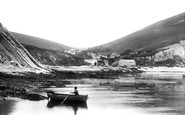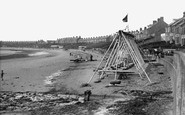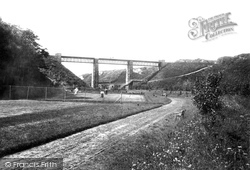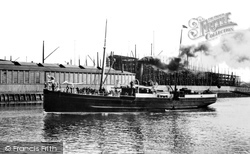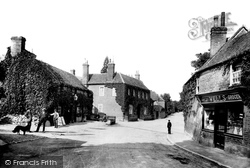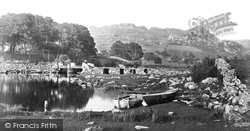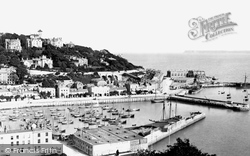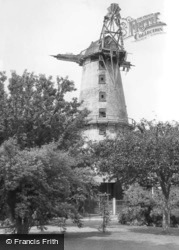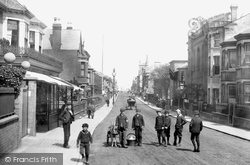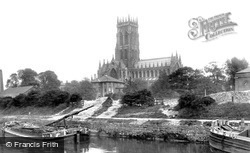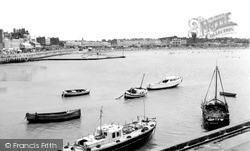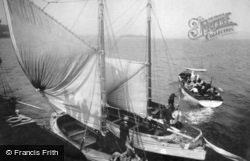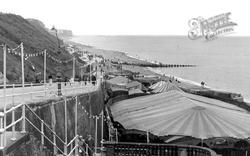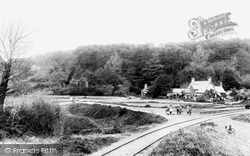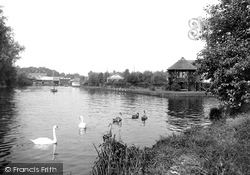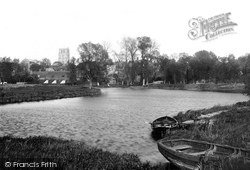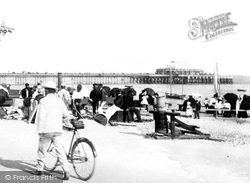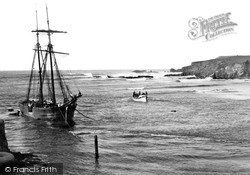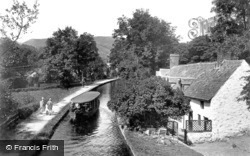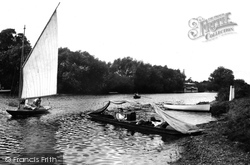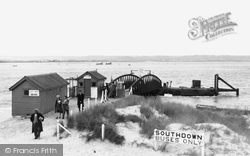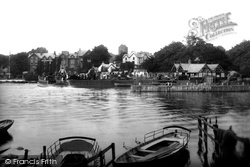Places
14 places found.
Those places high-lighted have photos. All locations may have maps, books and memories.
- Coates, Lancashire
- Coate, Wiltshire (near Swindon)
- Coates, Lincolnshire
- Coat, Somerset
- Coates, Gloucestershire
- Coates, Nottinghamshire
- Coates, Cambridgeshire
- Coates, Sussex
- Coates, Lothian (near Penicuik)
- Coate, Wiltshire (near Devizes)
- Great Coates, Humberside
- Salt Coates, Cumbria
- Little Coates, Humberside
- North Coates Airfield, Lincolnshire
Photos
49 photos found. Showing results 1,161 to 49.
Maps
88 maps found.
Books
1 books found. Showing results 1,393 to 1.
Memories
1,485 memories found. Showing results 581 to 590.
Kingswear, Me, And My Dog.
He was only a few weeks old when he came to us, my mother had got to know about him and thought he was just the thing I needed to cheer me up. I was fourteen years of age and had not long moved home; my parents had decided ...Read more
A memory of Kingswear
Wartime Prefabs At Upper Boat.
I have just read a memory of this extate from Brian Williams, I lived there from 1943 to 1945, at which point my father returned to his pre-war workplace at Croydon Airport. I remember a Brian Williams, I wonder if its the ...Read more
A memory of Upper Boat by
Wartime Prefabs At Upper Boat.
I have just read a memory of this extate from Brian Williams, I lived there from 1943 to 1945, at which point my father returned to his pre-war workplace at Croydon Airport. I remember a Brian Williams, I wonder if ...Read more
A memory of Upper Boat by
Growing Up At Lulworth Cove
I lived in Lulworth Cove from 1949 to until 1972. It was a fantastic place to spend your childhood and have many happy memories of time spent with my sister and friends. Crabbing, swimming, rowing boats across the ...Read more
A memory of Lulworth Camp by
Childhood Memories
This August 2014, on my way back from Whitby, I took a detour and called at Reighton Gap. The last time I was there was in the late 1950s / early 60's when we stayed at the bungalow my grandmother owned on Boat Cliff Road. I seem ...Read more
A memory of Reighton by
Entree Into That Green And Pleasant Land.
My name was Jeannette Turner. In about 1936 my mother father and self-age 3 moved from the Eastend of London, via first moving into 46, Hillingdon Road Barnhurst, to stay with my recently widowed Auntie Daisy. My ...Read more
A memory of Dartford
Zoo And Other Seafront Memories
I definately remember the little zoo on the front of the esplanade probably in the 1960's. There were some birds and possibly a monkey but I remember particularly a huge tortoise ( it may have been a turtle), which was ...Read more
A memory of Largs by
Shuggy Boats
They were chained up in winter. We used to climb over them as kids. Just past the Quay Wall, they were the only ones I have ever seen in 72 years. Were they unique?
A memory of Newbiggin by
Salfords, School, 1955
I was born in 1950 in New House Lane, then moved to Copsleigh Ave around 1954, I think it was 1955. When I attended Salfords School then went to the new school in Copsleigh Ave, we lived at No.58 until 1968 when we emigrated ...Read more
A memory of Salfords in 1955 by
A Kids Heaven And Hell
A St Marychurch boy, I lived at Hampton Farm Cottage, St Marychurch... and I can still smell the tar and the salt from old fisher and other boats pulled up on Oddicombe beach... and I can still feel the beautiful ...Read more
A memory of Oddicombe Beach in 1940 by
Captions
1,648 captions found. Showing results 1,393 to 1,416.
The glen was purchased by the IOMR in the 1930s, who added a boating lake, bowling greens and children's play area.
On summer Sundays there was more work to be done by the boat, with 'Holiday Tours' to Liverpool or Dublin calling at Douglas.
There are swimming-baths and assembly-rooms, and a People's Palace … There is a large pier, a tramway, and a kind of Rosherville Garden with a lake for boating.'
Here the characters in Jerome K Jerome's 'Three Men in a Boat' lunched, accompanied by their dog. The lunch was, apparently, 'much to Montmorency's satisfaction'.
Beside the stone causeway and bridge, rowing boats invite anglers or sightseers to venture out on the water.
The orderly mooring of boats assists any single one to slip her lines and negotiate the harbour entrance without causing disturbance or damage to neighbouring craft.
This is a very tall brick tower mill with a boat shaped cap, four patent shuttered sails and a fantail. Built in 1789, it ceased work after lightning damage in 1940.
In the hazy distance are the sails of boats. The street is lined with a medley of newly-constructed buildings.
Here we see a Humber keel boat on the river. In the background is the great parish church of St George built in 1858 to replace an earlier one which had been destroyed by fire five years earlier.
This view looks across the harbour and the boating pool from the pier.The clock-tower is just to the right of the centre of the picture, and we can see the entrance tower to the Dreamland amusement
Many of the Morecambe Bay boats had names suggesting that they were bigger vessels, such as the 'Queen Mary' in the foreground -but she predated the Cunarder.
The increasing number of these facilities crammed into this popular spot forced the local fishermen to move their boats to the opposite end of the promenade nearer to East Beach.
Coppet Hall's name is believed to be derived from 'coal pit haul': before the laying of the railway track in the 1870s, a tramline existed on which coal was hauled on horse-drawn trucks to
One of the three main rivers which drain the Broads, the Bure is typically slow-flowing; a large number of cruising boats from Collins & Son (in the background) confine their cruising to the River Bure
Along the river frontage are boat yards, moorings and maltings.
They initially consisted of a jetty leading to a landing stage for boats, but they soon became fashionable promenades extending over the sea.
Launching at low tide was achieved by towing the boat over the sand with a team of horses; the launch took place stern first to protect the rudder in the surf.
Built by Thomas Telford, it was constructed to carry coal, slate and limestone for fertiliser.Two women walk with a child along the canal, while further ahead the horse can be seen towing the canal boat
The canvas covering suspended over metal hoops not only protected boating enthusiasts from inclement weather, but also allowed them to sleep on board.
Note the sign for Southdown Buses, and a reminder that the last boat sails at 8.45 (left). The island railway opened in the 1860s, crossing to Hayling from Havant over a wooden bridge.
Observing this remarkably packed mass of presumably happy humanity are the occupants of a private steam launch and people in rowing boats.
Dropping pots from open clinker-built boats in pitch darkness and foul weather meant the whelkers could often find themselves stranded for hours on end on the wrong side of the bar waiting for the tide
The initial phase was in 1884, followed by the next a year later in tandem with a change of name – the Boat Club becoming the Yacht Club. The third section was not completed until 1905.
There was much to do apart from sea bathing; as well as donkey rides, there were boating, sporting activities, country rambles, concerts and plays.
Places (14)
Photos (49)
Memories (1485)
Books (1)
Maps (88)

